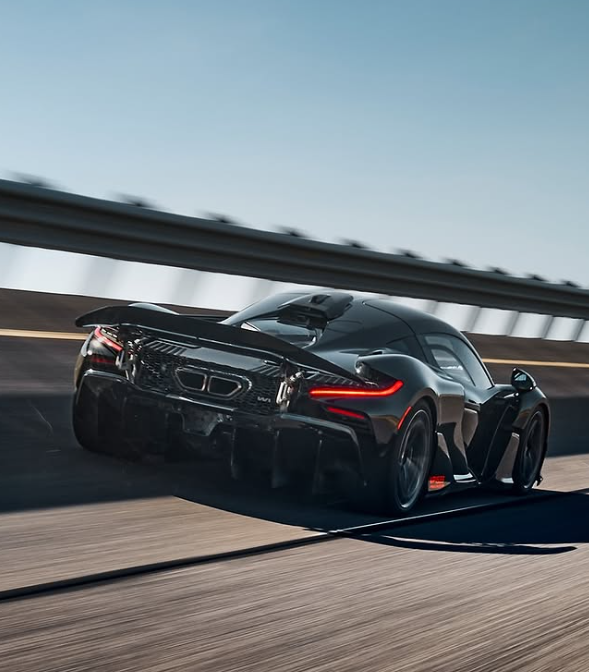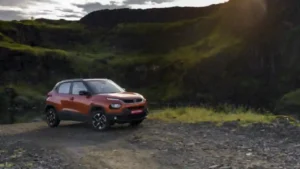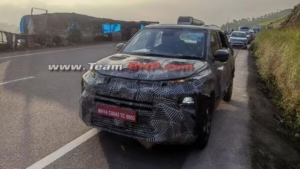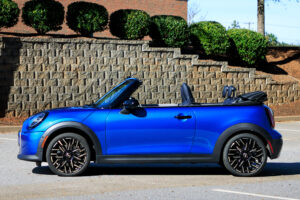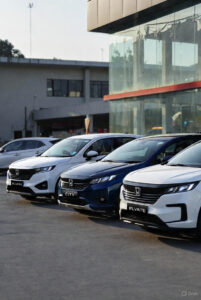McLaren took its W1 hypercar to Arizona’s brutal desert for hot weather testing. The goal was clear: ensure this beast performs flawlessly in scorching conditions. Engineers drove prototypes hard, covering over 5,000 kilometers in two weeks. Temperatures climbed past 104°F, stressing every system. As a result, the W1 proved it could handle the heat without breaking a sweat.
This testing phase was a big deal. It came before customer deliveries, set to start soon. Arizona’s desert, often called a “torture chamber,” pushed the car to its limits. Consequently, McLaren confirmed the W1’s readiness for real-world challenges.
Meet the McLaren W1: A Game-Changing Hypercar
The W1 is McLaren’s latest masterpiece. It follows in the footsteps of icons like the F1 and P1. Engineers built it for unmatched speed and precision.
Power comes from a 4.0-liter twin-turbo V8 hybrid engine. It pumps out 1,258 horsepower and 988 lb-ft of torque. For perspective, it rockets from 0 to 60 mph in 2.7 seconds. Hitting 124 mph takes just 5.8 seconds. Moreover, it reaches 186 mph in under 12.7 seconds. Top speed? A cool 217 mph.
Weighing only 1,399 kg, the W1 boasts a power-to-weight ratio of 911 PS per tonne. As a result, it’s nimble and responsive. The design pulls from Formula 1, with an active rear wing for killer downforce. Meanwhile, the cabin keeps things driver-focused, with comfy seats and sharp controls.
Simply put, the W1 redefines what hypercars can do. It’s built for tracks but feels at home on roads.
Why Arizona’s Desert? The Ultimate Stress Test
Arizona’s desert isn’t just hot—it’s brutal. Temperatures soar, and the terrain is unforgiving. McLaren picked this spot for a reason.
The heat tests cooling systems to the max. Rough roads shake the chassis. Plus, dust and debris challenge durability. Vikram Shah, a McLaren engineer, called it a “torture chamber” for good reason.
Consequently, the W1 faced real-world extremes. High-speed runs pushed aerodynamics. Hard braking tested suspension. For instance, altitude changes in Arizona stressed the engine differently. Engineers tweaked calibrations to keep power steady.
McLaren’s been here before. The P1 endured similar desert trials years ago. However, the W1’s hybrid setup added new challenges. The battery needed to stay cool under load. Arizona’s mix of highways and tracks let the team test every angle.
In short, this environment separates the best from the rest. The W1 came out on top.
Inside the Testing: Engineers in Action
Two W1 prototypes hit Arizona for two intense weeks. Engineers drove day and night, racking up hundreds of hours. US teams handled daytime runs, sending data to the UK overnight. Jonathan Beaumont noted how this teamwork sped things up.
The W1 tore through deserts, passing cacti and open roads. A video McLaren shared shows it flying along Route 66. Track sessions followed, pushing the car harder. Temperatures hit 104°F, but the W1 didn’t flinch.
Andy Beale, another engineer, praised its versatility. It switched from track beast to road cruiser effortlessly. As a result, the team gathered critical data. They fine-tuned systems for peak performance.
Every test was repeated to ensure reliability. Consequently, the W1 proved it could handle anything.
Systems Under Fire: What Was Tested?
Cooling systems took center stage. The V8 and hybrid battery needed to stay chill under full load. Engineers nailed it—no overheating issues.
Aerodynamics balanced downforce with airflow. This kept the car planted at high speeds. Meanwhile, the cabin stayed comfortable, even after hours in the sun.
Brakes faced brutal tests. Hard stops and high G-forces didn’t faze them. The suspension handled rough roads like a champ. Moreover, the hybrid system delivered consistent power, with the V8 revving to 9,200 rpm flawlessly.
Environmental factors like dust were no match. The W1 resisted wear and tear. As a result, it’s built to last.
Every system passed with flying colors. McLaren’s obsessive engineering shone through. The W1 is ready for anything.
Lessons from the Cold: A Year-Round Hypercar
Before Arizona, the W1 tackled Arctic winters. Sub-zero temperatures tested traction and battery life. That phase, completed in April 2025, complemented the desert trials.
For example, cold weather focused on stability in snow. Arizona stressed cooling under heat. Together, they make the W1 a true all-weather machine.
Engineers applied insights across both tests. Thermal management improved universally. However, each climate demanded unique tweaks.
This dual approach mirrors Formula 1 rigor. It ensures the W1 performs anywhere. Owners can drive with confidence, rain or shine.
What’s Next for W1 Owners?
Deliveries start soon, and excitement is high. Only 399 W1s will be made, each priced around $2.6 million. That exclusivity adds to the allure.
The W1 promises thrills in any climate. Its desert performance proves it’s ready for hot regions. Plus, its design handles diverse roads with ease.
McLaren might tweak things further based on test data. For now, the W1 stands as a leader. It’s a hypercar that inspires.
Join the McLaren W1 Journey
The W1’s Arizona test is a story of grit and innovation. Engineers turned a harsh desert into a proving ground. They built a car that laughs at extremes.
Picture yourself behind the wheel, feeling that V8 roar. The W1 isn’t just a car—it’s a dream brought to life. McLaren’s passion shines in every detail.
Want more? Check out McLaren’s site for videos and updates. Share your thoughts below. Let’s geek out over this hypercar together!
Sources
- Official McLaren W1 Page (Hot Weather Testing Section)
- https://cars.mclaren.com/en/W1
- McLaren Automotive US Homepage (Testing Highlights)
- https://cars.mclaren.com/us-en
- McLaren W1 Hot Weather Testing Video
- URL: https://www.youtube.com/watch?v=6IItISrgFNU
BMW M4 Competition: Performance, Design & Driving Experience

